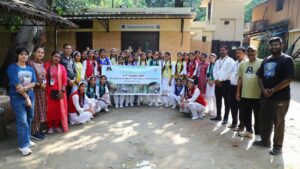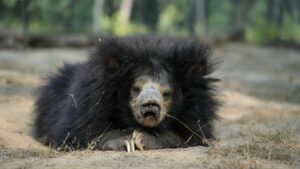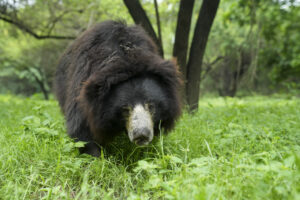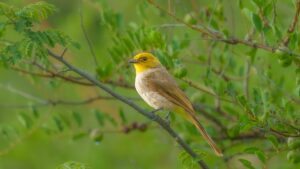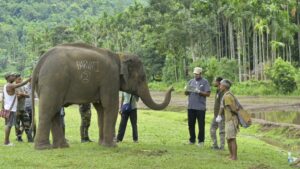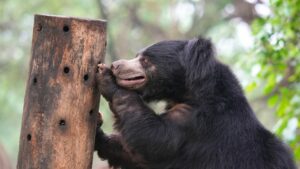Wildlife Week 2025, held between October 2 and 8 every year, saw a remarkable collaboration between students, forest officers, caregivers, and wildlife lovers across India. All stakeholders united under this year’s theme ‘Human-Wildlife Conflict: Coexistence and Conservation’ with the motive to educate, inspire, and act. At Wildlife SOS centres, meaningful events and community engagement conveyed effective conservation methods to mark the week.
Outreach Events for Forest Trainees and Students in Uttar Pradesh
At Agra Bear Rescue Facility (ABRF), we welcomed 35 Range Forest Officer (RFO) trainees from the Tamil Nadu Forest Academy on October 4. Their visit proved to be a beneficial opportunity to witness the workings of a rescue facility. Set up in 1999 in collaboration with the Uttar Pradesh Forest Department, ABRF is the largest sloth bear rescue centre in the world, currently housing 89 bears in enclosures equipped with shades, ponds, and enrichment structures.
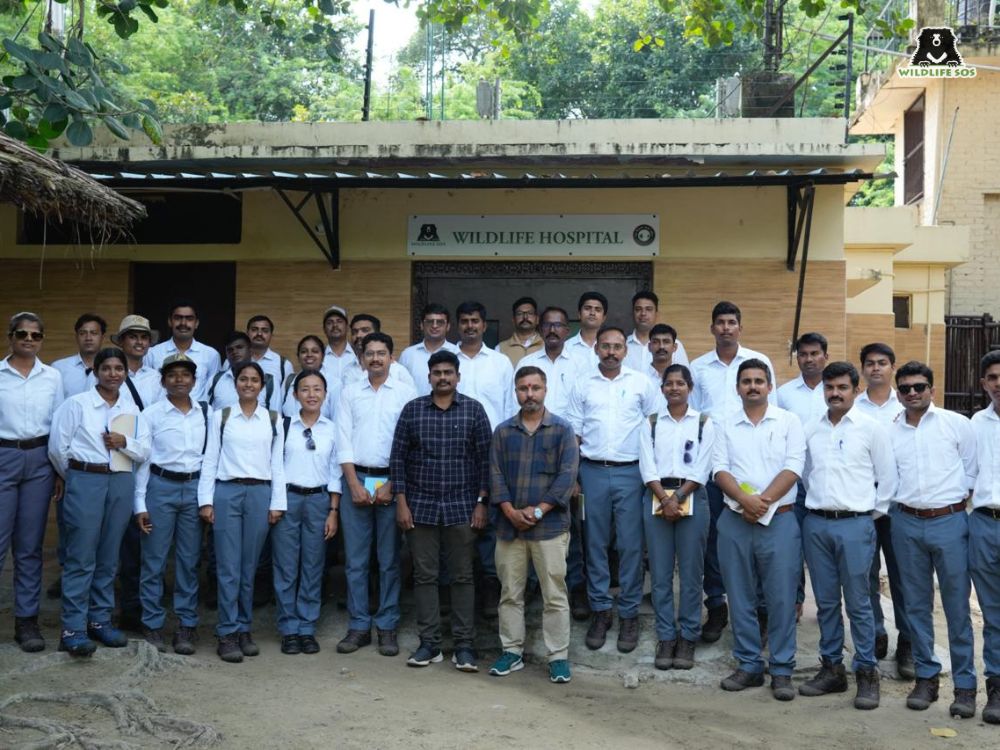
Tamil Nadu Forest Academy trainees joined Wildlife SOS for a comprehensive tour of the Agra Bear Rescue Facility. [Photo © Wildlife SOS/ Vineet Singh]
During their tour, the trainees were briefed on the post-rescue protocols followed for care and rehabilitation. Many were visibly moved after getting to know about our sloth bears’ traumatic past life, and how each is now being given humane care. The participants interacted with veterinarians and caregivers, learning about enrichments, dietary management, and overall welfare of the sloth bears.
On October 7, the centre opened its doors to nearly 80 students from Global Agra Convent School for an awareness session held by Wildlife SOS staff. The discussion focused on wildlife behaviour, habitat protection, and all the do’s and dont’s when encountering a wild animal. The engrossed students were motivated to think about their role in wildlife conservation.
A special awareness and training session was also organised at the bear rescue facility for students from St. John’s College, Agra. The session was led by Mr. M.V. Baiju Raj, Director – Conservation Projects at Wildlife SOS, who informed 25 participating students about wildlife rescue operations and how Wildlife SOS approaches challenging situations. He also encouraged the students to call the Wildlife SOS rescue helpline, whenever they encounter an injured or distressed animal, emphasising the importance of timely information and community involvement in wildlife protection.
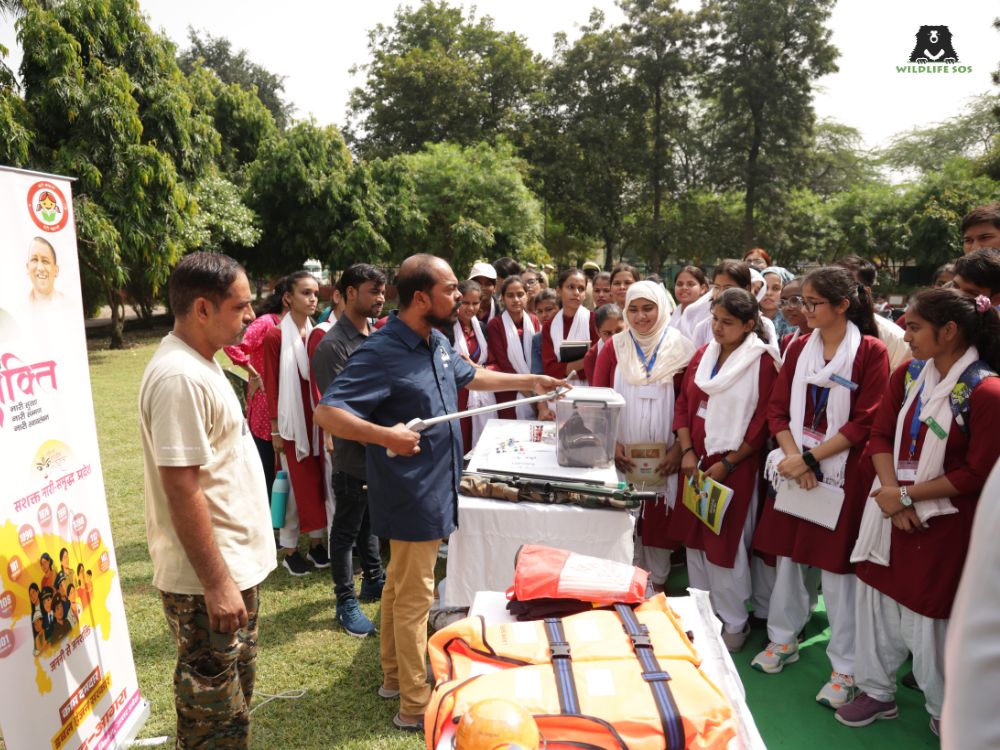
Mr. M.V. Baiju Raj, Director – Conservation Projects, Wildlife SOS, interacted with students from St. John’s College at Agra Bear Rescue Facility. [Photo © Wildlife SOS/ Mradul Pathak]
Educational Sessions for Students in Maharashtra
In Maharashtra, Wildlife Week sessions primarily emphasised on leopards. On October 4, our team held educational awareness sessions at Sonawane Government School, Ajanawale Government School, Lenyadari Vidyamandir, and Dnyanda School (Godre). The programme was led by Mr. Mahendra Dhore, Centre Head at Manikdoh Leopard Rescue Centre (MLRC), and was organised by the Junnar Forest Division for the students. The topics covered included leopard behaviour and safe coexistence practices, inviting several questions from young and inquisitive minds.
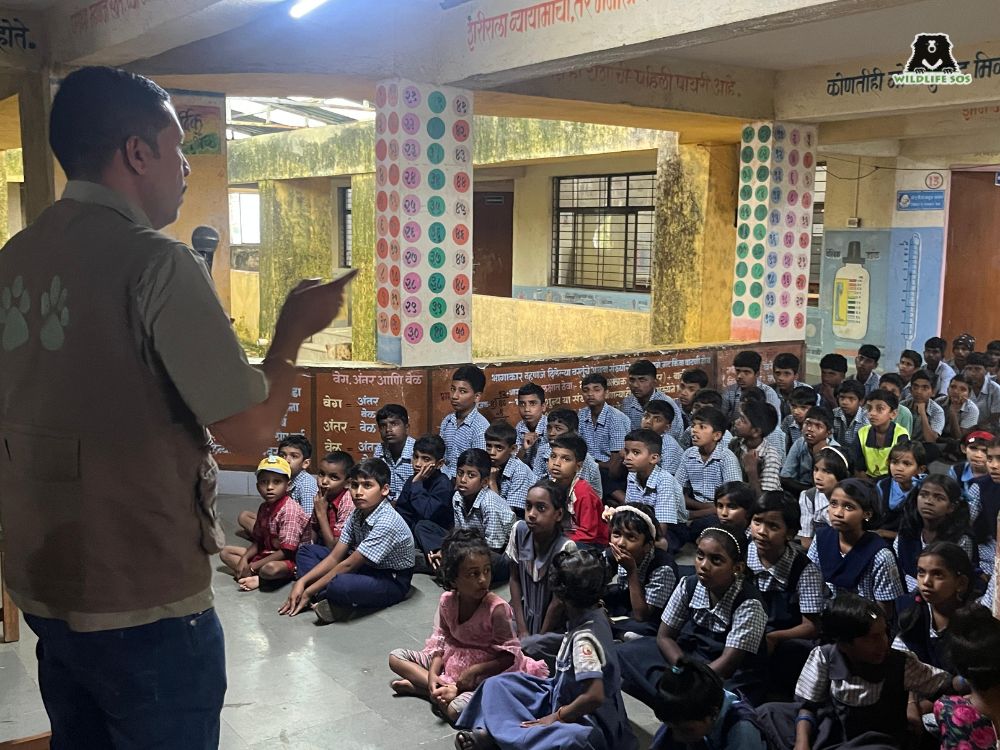
Mr. Mahendra Dhore, Centre Head at Wildlife SOS’s Manikdoh Leopard Rescue Centre, delivered an awareness session on leopards and human-wildlife coexistence at Ajanawale Government School, Junnar. [Photo © Wildlife SOS/ Akash Dolas]
On October 6, the Wildlife SOS team also visited Subhash Vidyamandir, Pimpalvadi, B.D. Kale College, Ghodegav, and Shivanjali Vidyaniketan, Chalakwadi — schools situated in areas prone to human-leopard conflict — to spread awareness. Mr. Mahendra Dhore interacted with students and spoke on how knowledge and causes of conflict can help tackle the situation appropriately to bring in peaceful coexistence.
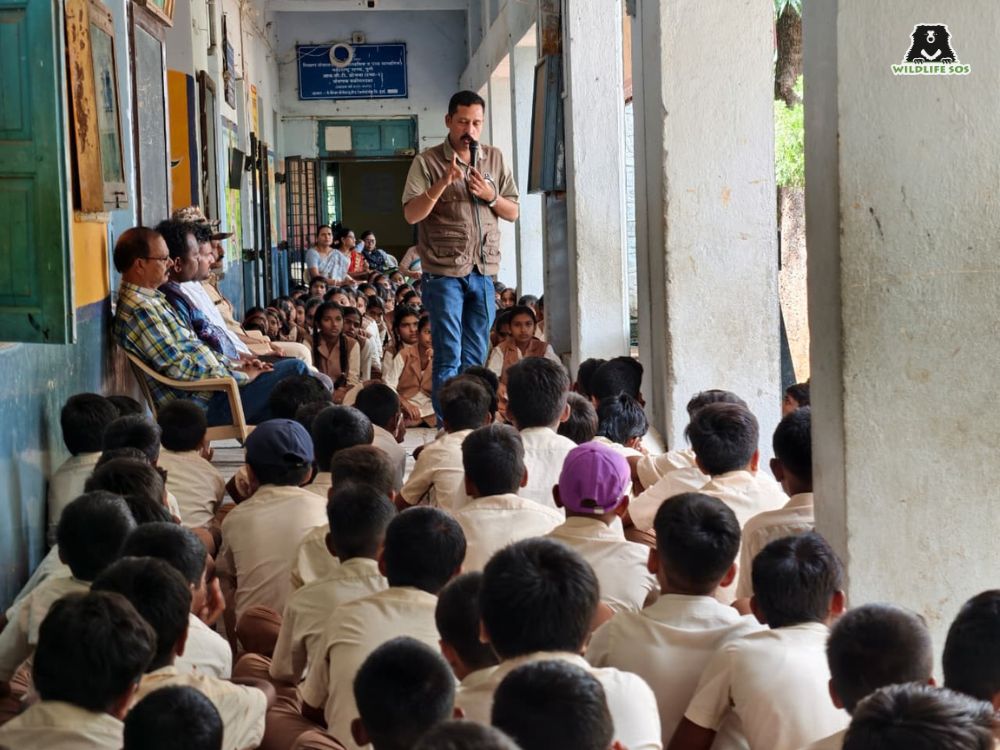
Due to rising instances of sudden wildlife encounters, Mr. Mahendra Dhore informed students about leopards and their behaviour to better understand the mammal. [Photo © Wildlife SOS/ Akash Dolas]
Students also learned about leopard diets and how certain human actions inadvertently heighten conflict risk. A detailed Q&A session at the end brought in many queries by captivated children that were addressed. The goal for these discussions was to bolster long-term harmony between humans and leopards through awareness.
Conservation Activities and Training Initiatives in Karnataka
On October 4, Wildlife SOS partnered with the Northern Trust, a financial services company, for a clean-up drive of forest zones within the Bannerughatta area. As many as 200 employees came together to remove plastics, discarded waste, and segregated trash. It was a vital initiative, as the region is shared by diverse wildlife that includes wild elephants as well.
An awareness session was also held at Bannerughatta Biological Park on October 5. Around 25 individuals were guided through Bannerughatta Bear Rescue Centre (BBRC), while another group were introduced to wildlife conservation at the biological park through presentations. Wildlife SOS’s Bannerughatta Bear Rescue Centre (BBRC) is home to over 50 rescued sloth bears rescued from the ‘dancing’ bear trade, conflict and poaching traps. Through discussions and demonstrations, the team at the centre showcased the organisation’s efforts to rehabilitate distressed sloth bears, while focusing on how habitat protection is the need of the hour.
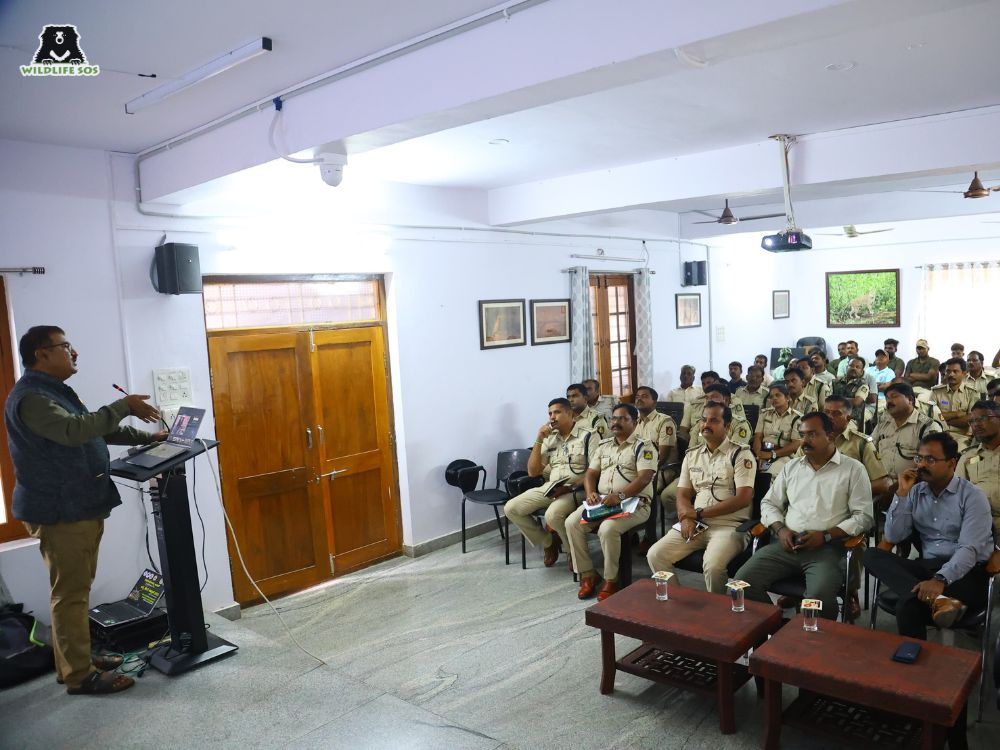
As part of the capacity building programme at the DFO Office, Ballari, forest department staff were apprised of how to safely carry out challenging wildlife rescue operations. [Photo © Wildlife SOS]
Adding to Karnataka’s Wildlife Week efforts, a capacity building programme was organised by the environment oriented SHWAAS Organisation in collaboration with the forest department at the DFO Office, Ballari District. The workshop emphasised on wildlife rescue operations and conservation, while training department staff on safe rescue procedures and fast response to conflict situations. The initiative was driven by equipping forest professionals with practical conflict management skills, strengthening Karnataka’s commitment to wildlife protection.
Wildlife Week Celebrations on Coexistence in J&K
The Wildlife SOS team joined the Central and Wetland Division and the Wildlife Protection Department of Jammu & Kashmir (J&K) to inaugurate Wildlife Week in Dachigam on October 2. The event saw the Regional Wildlife Warden, Dachigam Warden, civil society members, and spirited school students unite for a singular motive: to share the responsibility of saving biodiversity.
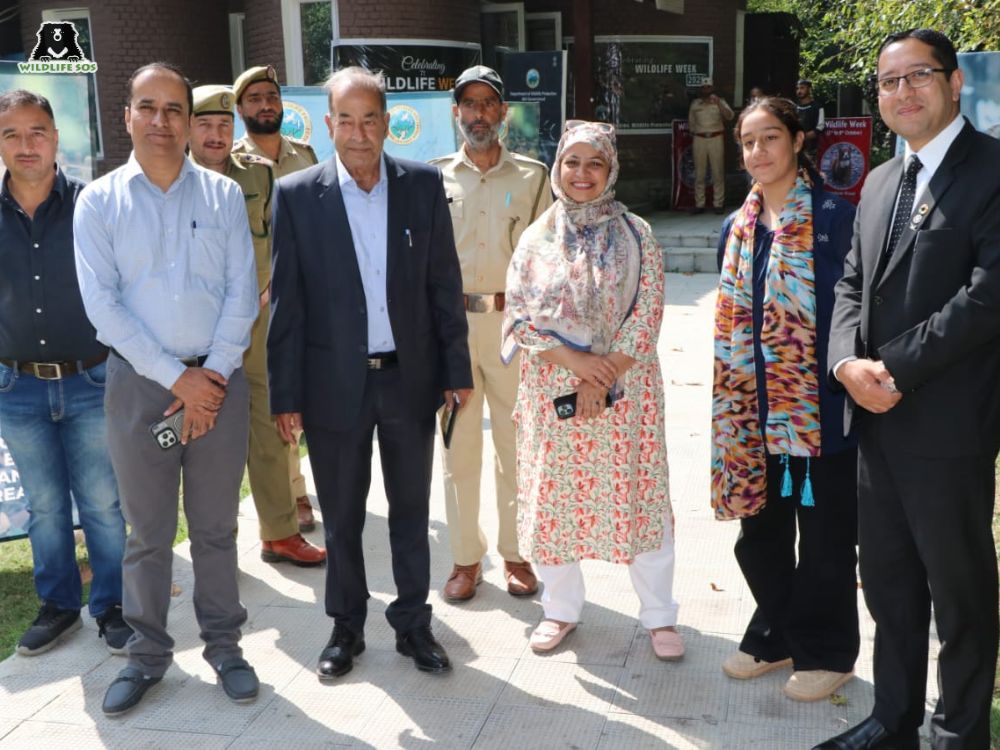
Wildlife SOS team inaugurated Wildlife Week with Regional Wildlife Warden and Wildlife Protection Department at Dachigam. [Photo © Wildlife SOS]
A plantation drive was also organised on the same day, which brought students, staff, and forest officials together to plant native saplings. Additionally, children performed skits that highlighted human-wildlife coexistence. The event was a compelling blend of art, science and advocacy.
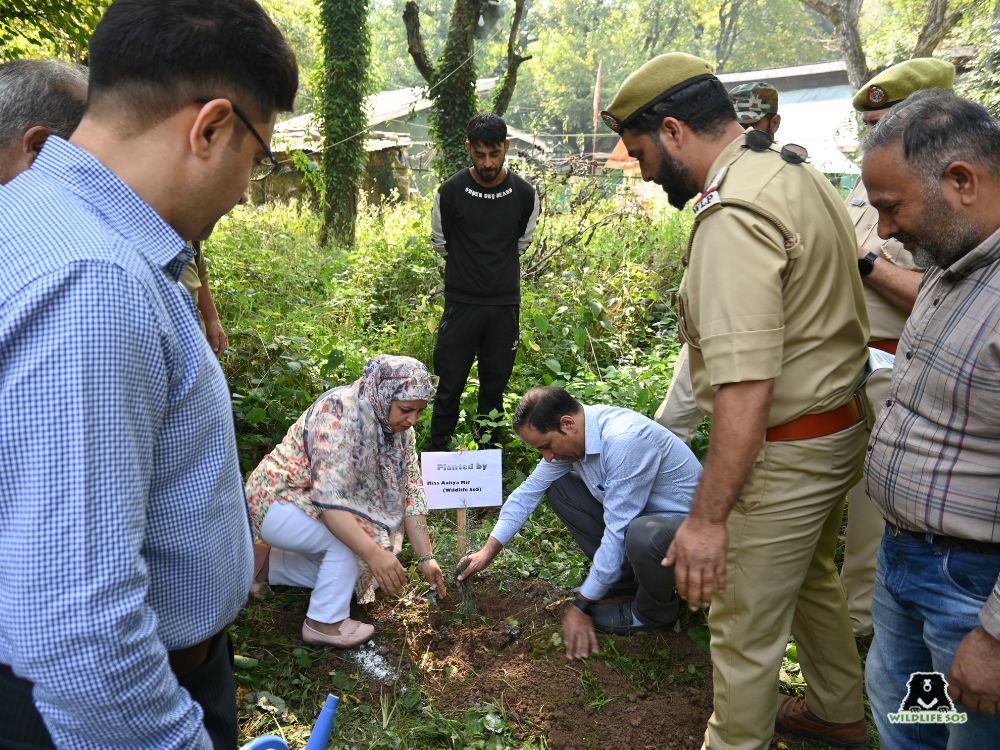
As part of the occasion, indigenous saplings were also chosen to be planted at Dachigam National Park on October 2. [Photo © Wildlife SOS]
On October 4, the energy shifted towards creativity, as painting and essay writing competitions for school students centred on wildlife and conflict mitigation took place. At Limber Wildlife Sanctuary, situated in northern J&K, Ms. Aaliya Mir, Wildlife SOS’s Education Officer and Project Head, and the Regional Wildlife Warden delivered engaging talks about the barriers caused by the human-wildlife conflict, and measures we can all take to reduce it.
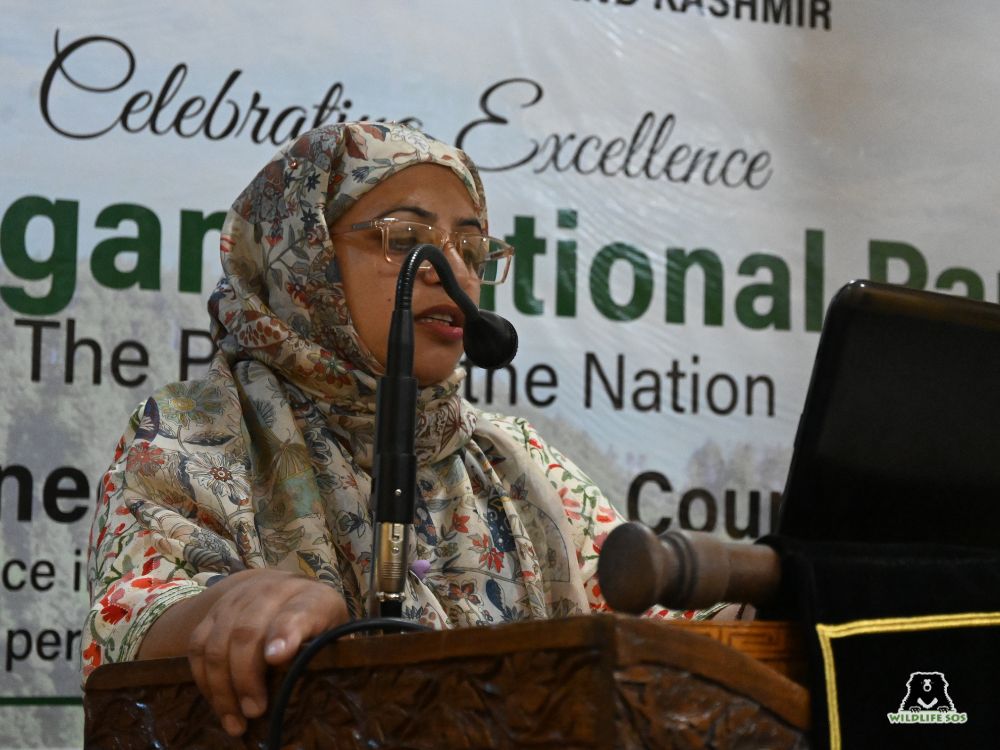
Ms. Aaliya Mir, Wildlife SOS’s Education Officer and Project Head in J&K, delivered a keynote address at Limber Wildlife Sanctuary to motivate students to stand up for wildlife and their habitats. [Photo © Wildlife SOS]
The celebrations continued on October 6 and 7 with workshops and training sessions in North Kashmir’s wildlife division. The Wildlife SOS team engaged with local communities and members of civil society to foster dialogue on human-wildlife coexistence, conflict mitigation, and community collaboration. An inter-school essay and painting competition was also organised, drawing enthusiastic participation from students across several schools in the region.
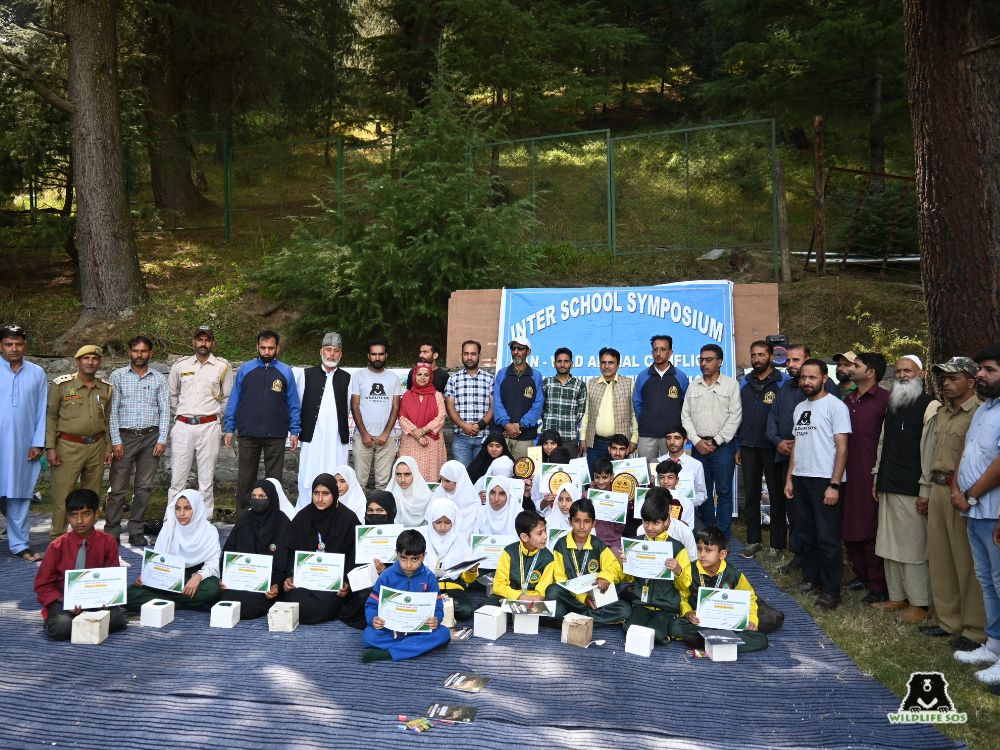
Young children displayed their creativity through thought-provoking essays and artwork inspired by this year’s theme – ‘Human Wildlife Conflict and Coexistence’. [Photo © Wildlife SOS]
To end the week, an insightful event was held at Sumbal Degree College where Ms. Aaliya Mir delivered a keynote address on the ‘Crisis in the Mountains and the Himalayan Brown Bears’. Her talk emphasised the importance of conserving indigenous species of J&K and promoting harmony between humans and wildlife. The college students also participated in a quiz competition on the same theme, making the event both educational and interactive.
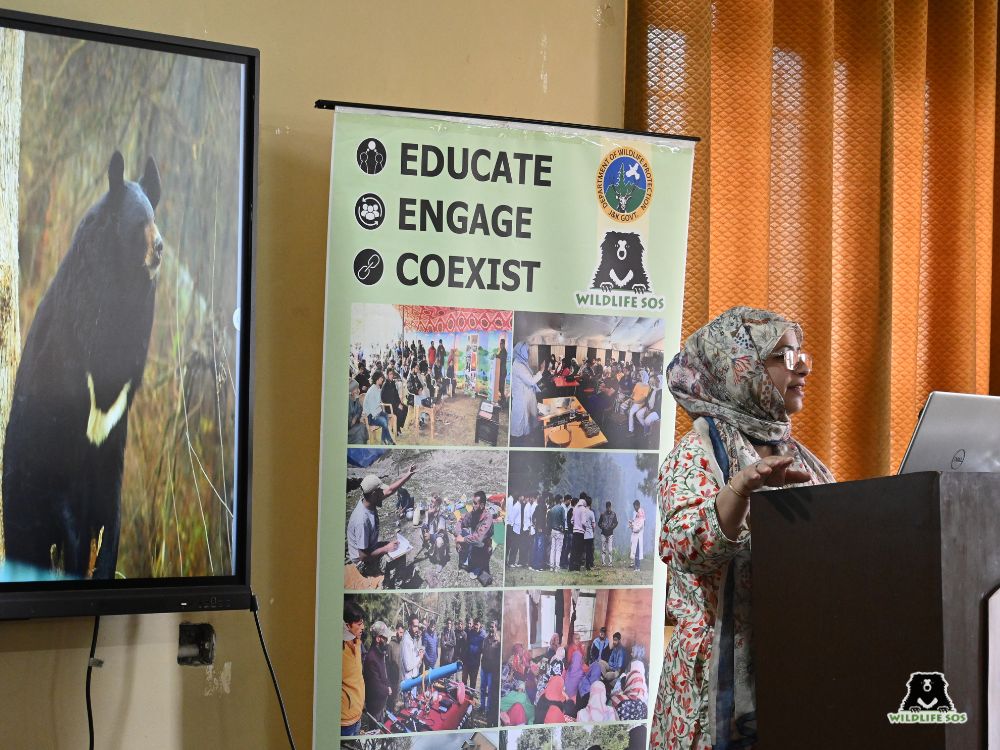
Ms. Aaliya Mir focussed on the importance of conserving Himalayan brown bears in her address at Sumbal Degree College, J&K. [Photo © Wildlife SOS]
Wildlife Week 2025 united forest officials, communities, and young learners in a shared mission to protect India’s special wildlife. From spreading awareness to taking hands-on action, every initiative brought us closer to a future where humans and wildlife can thrive together. If you’d like to visit one of our rescue centres or organise an awareness session or workshop, we’d love to hear from you. Write to us at info@wildlifesos.org
Feature image: Vineet Singh/ Wildlife SOS

